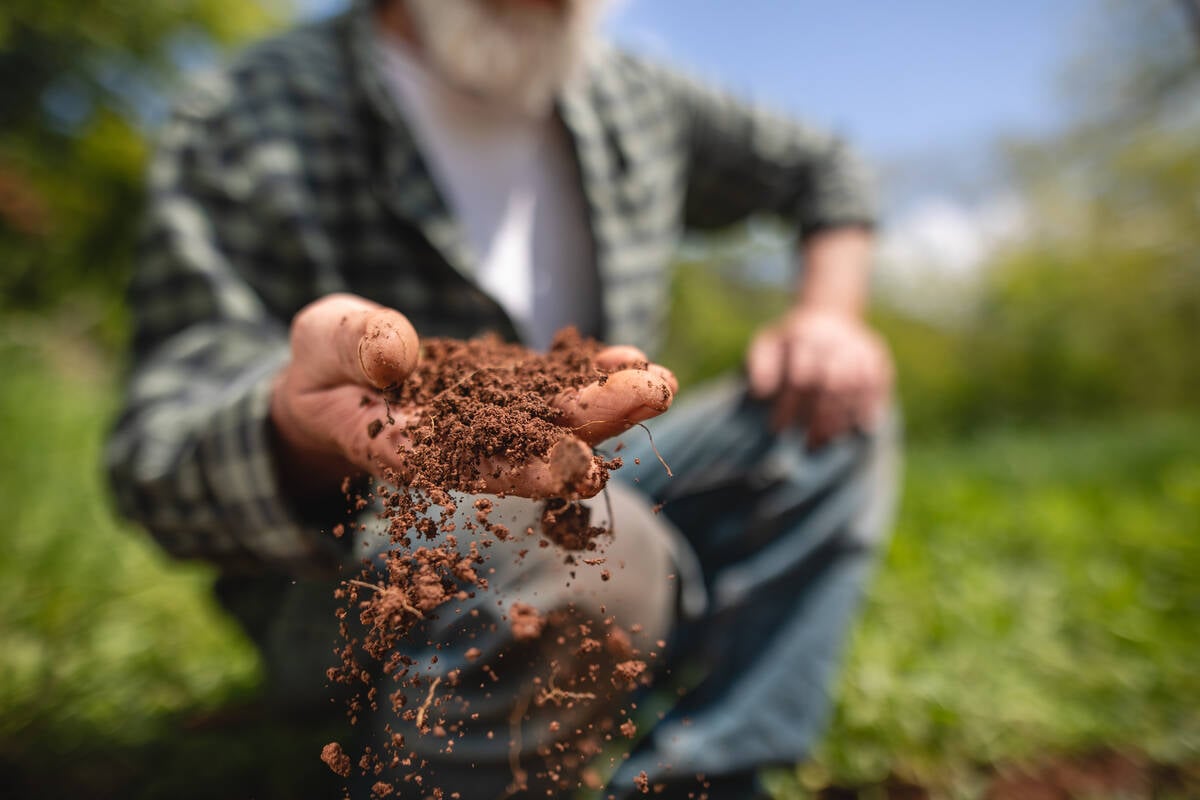Before jumping back to our meteorology 101 classes, we have to say a few words about this spring’s snow melt. Holy cow, was that fast!
Perfect conditions came together for what can only be called one of the fastest snow melts I can remember. First off, most areas did not have deep snow cover and there was not as much drifting snow this winter, which meant the snowpack was relatively thin and uniform. The second contributing factor to the rapid melt was the relatively late start.
After a cold March and early April, warm air finally arrived, pushing daytime highs into the mid-teens across most of southern and central Manitoba. These warm temperatures, combined with strong spring sunshine and a shallow uniform snowpack, resulted in most of the snow disappearing in a matter of two to three days.
Read Also

Finally getting paid for sustainable farming?
Alberta project says they might have a line on a workable ecosystem credit model to reward farmers for sustainability, and Manitoba might be next
Not only did the snow disappear quickly, but so did the runoff. I can’t speak for all areas of the province, but in my own backyard the melt started and within a day and a half there was standing water everywhere.
Fast forward two days and most of the standing water has run off, which normally takes a week or two.
In this week’s lesson we will look at the difference between land and water and how they manage the energy coming in from the sun. In its simplest form, Earth is composed of two different surfaces — land and water. These two surfaces are not arranged evenly around the planet but are broken into an irregular arrangement of continents and oceans.
It is the differences between the way land and water absorb and store incoming solar energy, and the irregular distribution of these two surfaces, that greatly influences our planet’s weather.
There are five main factors that control the way incoming solar energy is handled by land and water and these are evaporation, transparency, specific heat, vertical movement and horizontal movement.
The first main factor is evaporation. When solar energy strikes water, some of that energy is used to turn the liquid into vapour. This energy is absorbed and stored in the water vapour as latent heat. You can feel this happen when you wet your skin and let air blow across it. That part of your body feels cooler because heat is being absorbed from your skin to allow evaporation.
Over the entire Earth, it is estimated that nearly 85 per cent of all evaporation takes place over oceans. This means that over water, a large portion of the sun’s energy is stored as latent heat.
Our second main factor is transparency. When we compare water to land, it becomes pretty obvious that water is much more transparent than land.
Over land, the sun’s energy cannot penetrate more than a centimetre or two into the ground, which means the energy is absorbed at the surface. This is one of the major reasons land surfaces heat up rapidly during the day and also why they cool rapidly at night.
Over water, the sun’s energy can penetrate as deep as 60 metres. The energy is spread out and absorbed over much larger areas, and results in a slower warm up during the day and a much slower cool down at night.
The third main factor, specific heat, is tied closely to the previous one. Every substance has its own specific heat value, and that value basically tells us how much energy it takes to heat that substance.
For example, if you use a copper pot for cooking, it would have a specific heat of around 0.4 J/gram. This means to raise the temperature of one gram of copper, you need about 0.4 joules of energy.
Water, on the other hand, has a specific heat of about 4.0 J/gram, which means it requires about 10 times more energy to heat water than copper.
Comparing land and water, when given the same volume of each substance, water takes four times as much energy to heat than land. So, if we combine this fact with transparency, we can see that it will take a lot longer to warm up a body of water than it will to warm a land surface.
We see this happen every fall and spring. On a cold fall day, a body of water is much warmer than the land around it, while in the spring, the land areas warm up quickly and the water struggles to melt the ice.
Our final two influences are movement in both vertical and horizontal directions. This is simple to picture and understand, but it has large implications for our planet’s weather.
When we look at land, for the most part, it doesn’t move. Soil at the surface that warms quickly doesn’t move underground, taking heat with it. Land pretty much stays where it is.
Water, on the other hand, is almost constantly in motion. The sun warms the top layers and these top layers can then be transported downward with wind and currents, warming the deeper layers and creating a larger heat storage area.
Even bigger than vertical movement of water are the ocean’s currents, or horizontal movements. These currents can take energy stored in one part of the ocean and move it to another part. Some of this energy can be released, moderating the temperature of the area.
If you think about how big and deep the oceans are and about vertical and horizontal movements of energy, you start to see how much influence the oceans have on our planet’s overall weather.
In our next class, we will build on this knowledge by looking at Earth’s temperature patterns and then how this plays into why the winds blow as they do.
















